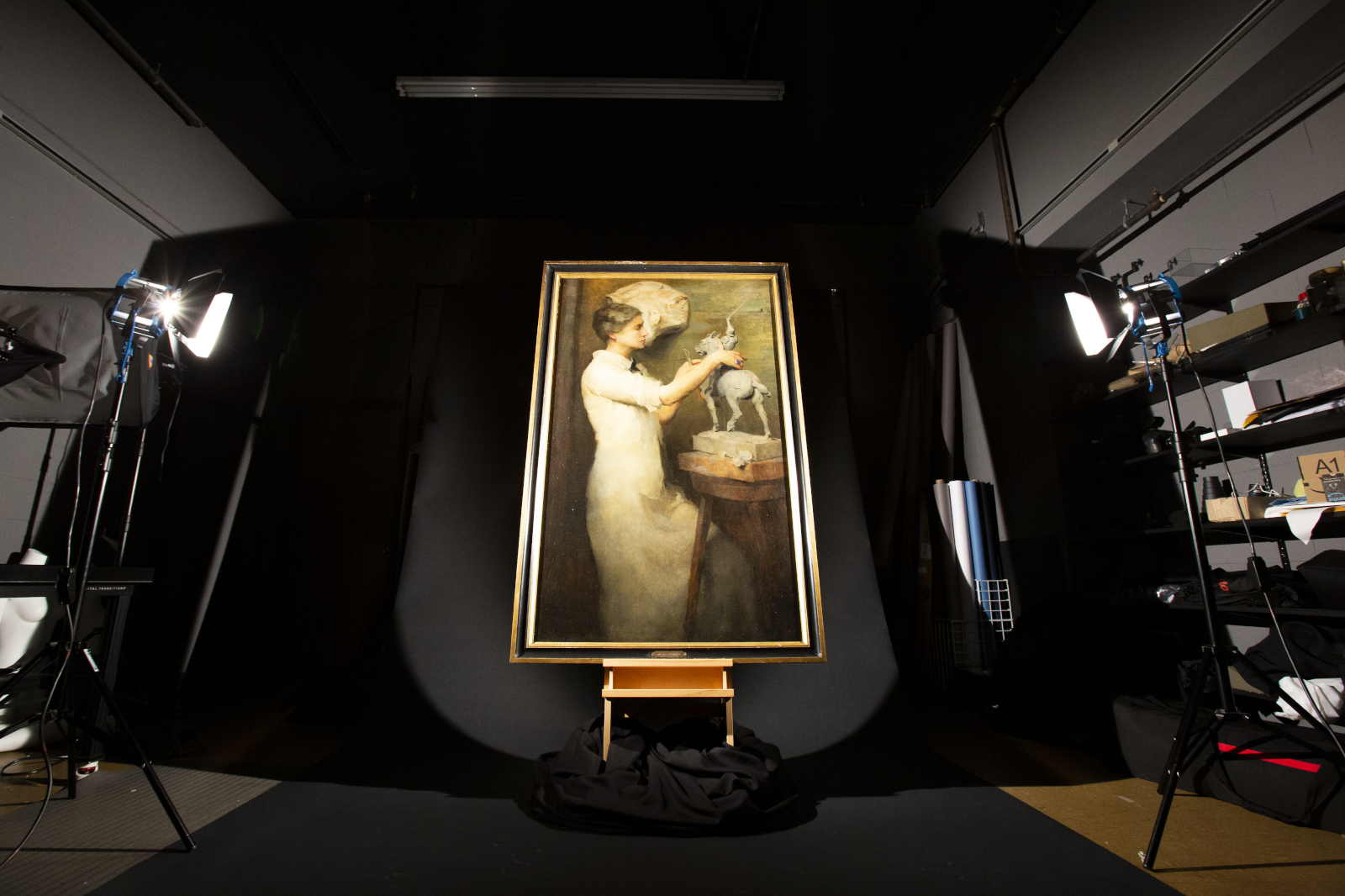
“Every French sculptor has done his Joan of Arc, and is sure to, so that she’d been done in light of every imaginable form as far as I could see. And my challenge was to get a composition that was original, that hadn’t really been done before. That was the fun of it.” – Anna Hyatt Huntington, 1964 Oral Interview for the Archives of American Art, Smithsonian Institution.
Women in Art
As a woman, especially one in the art world, I get a lot of joy from seeing women supporting each other, building one another up and celebrating their achievements. I also love finding women in art history, they’re all too often forgotten and overlooked in favor of their male counterparts, take Artemisia Gentileschi, Judith Leyster, or Élisabeth Vigée Le Brun for example – three of the few female names included in Art History. Judith Leyster and other Dutch female artists were only recently included in the Rijksmuseum Gallery of Honor – their contributions to Dutch art finally recognized after more than 3 centuries.
But looking back at some of the women in art history, there was no reason they should have ever been forgotten, their works are just as skilled, and expressive, if not moreso. In the world of maritime art history, women were even rarer – Anna Richards Brewster, daughter of William Trost Richards (keep that name in the back of your mind), is one of very few female names in Maritime Art History. So finding women in our own collection here at The Mariners’ Museum and Park was a special thing.
I knew of Anna Hyatt Huntington, it’s a little hard not to here, together she and her husband, Archer Huntington, founded The Mariners’ and we’ve got tons of her gorgeous sculptures. But I wanted to stick with paintings for this series, at least for now. While I was looking for information on a different painting, I saw this one of Anna Vaughn Hyatt (later to be Huntington). I was enamored with it and when I discovered the artist behind this painting, Marion Boyd Allen, is female, I might have done a little happy dance.
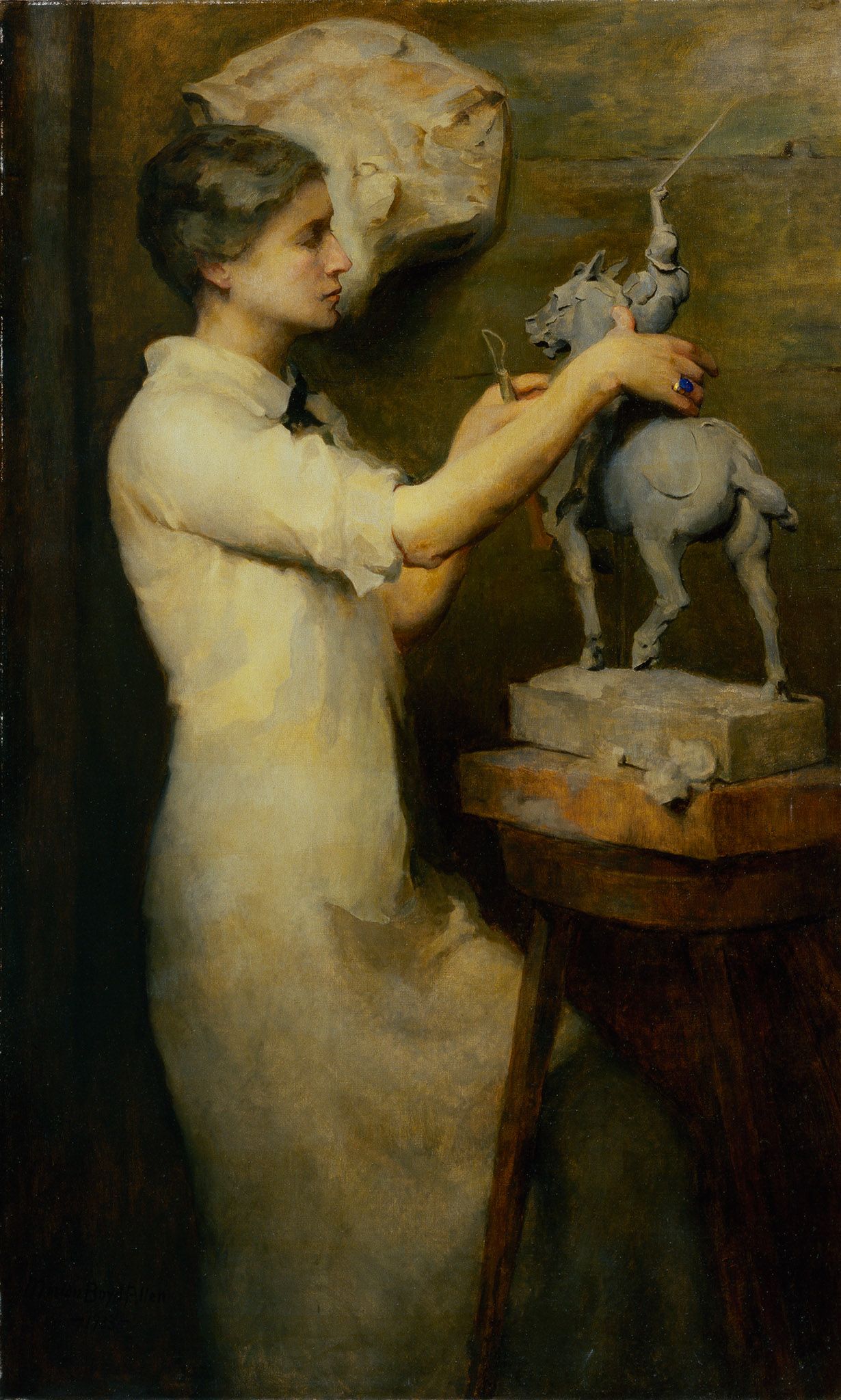
The Story of Anna
This ¾ length 1933, oil on canvas Portrait of Anna Vaughn Hyatt by Marion Boyd Allen is a work in which we see women celebrating women, building them up both literally and figuratively. The version we have here at The Mariners’ Museum and Park is actually a copy of the 1915 original that is in the permanent collection of The Maier Museum of Art at Randolph College. This copy was made by Marion Boyd Allen and commissioned by Archer Huntington. Story has it that in 1933, after Archer and Anna married, the two attended an exhibition featuring the original 1915 portrait and Archer offered to purchase the portrait, but the college refused. Finally after much back and forth, the compromise was reached that Marion Boyd Allen could reproduce the portrait in a scale copy. The two seem to differ only in minutiae.
Anna, confident and concentrated, is shown building up a clay model of her world renowned Joan of Arc Equestrian Statue. Her right hand skillfully supports the famous heroine. Her gaze is soft but her posture projects a sense of strength and self-assuredness. This is no doubt drawn from Anna’s life at this time – a self sufficient sculptor, which was a feat that few other women could claim to have achieved in 1915. In the 1964 Smithsonian interview that I quoted at the beginning, Anna talked about how hard she worked on her art, she recalls the other women she lived with in New York when she was 24 saying,”Well, we worked hard; we worked awfully hard. […] We were a very busy crowd. We didn’t have parties all the time or
anything of that sort. We were too dead tired at night.”
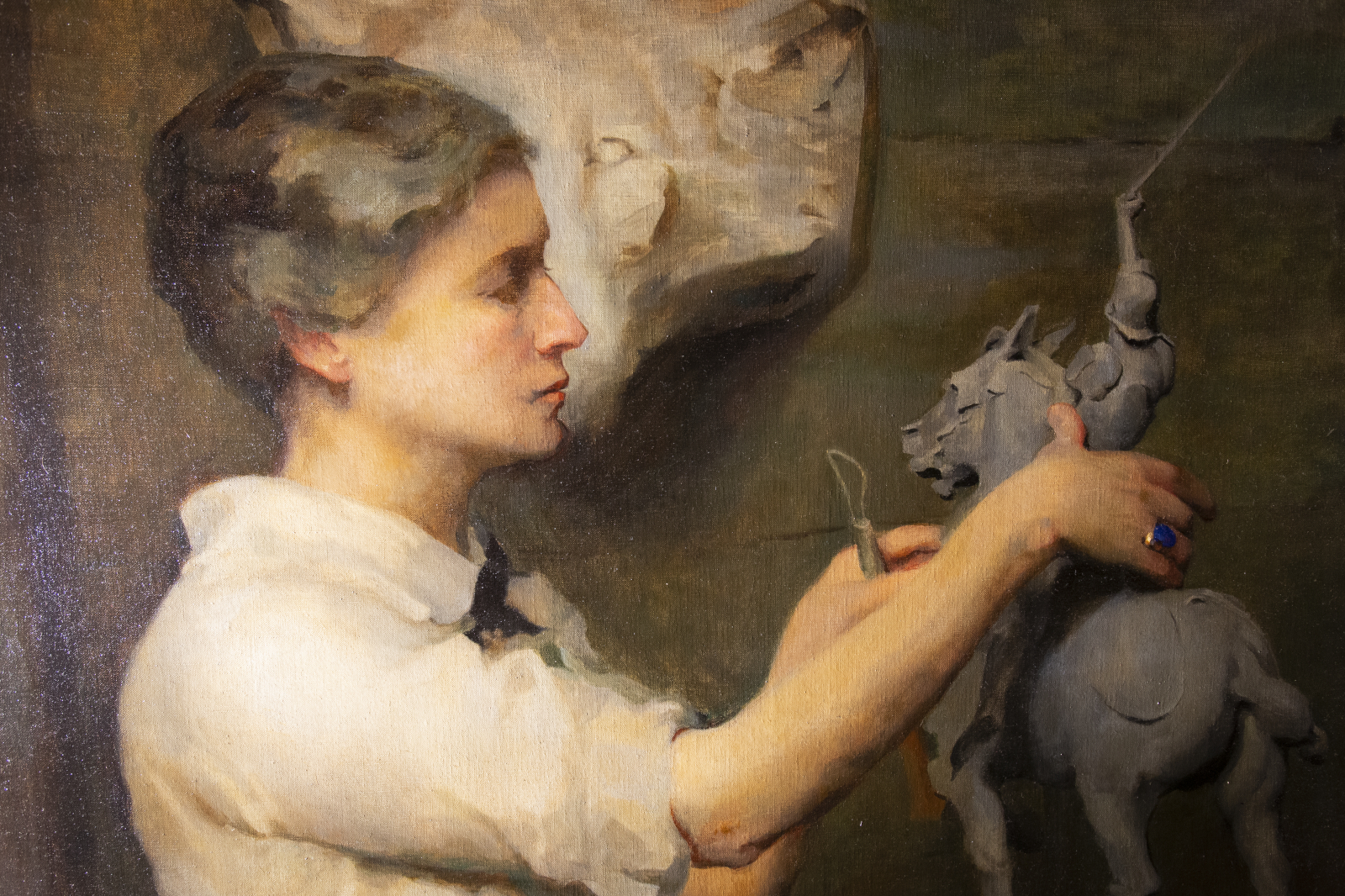
The Symbolic Sculptor
The artist, Marion Boyd Allen has a style that falls somewhere between Impressionism and Realism which is an interesting blending of styles. The large, gestural, brushstrokes bring the soft spontaneity of impressionism, and are then balanced and brought back to reality by the muted colors and contemplation on the face of the subject. The mottled white of Anna’s shirt is the same as the stone lion’s head on the wall behind her.
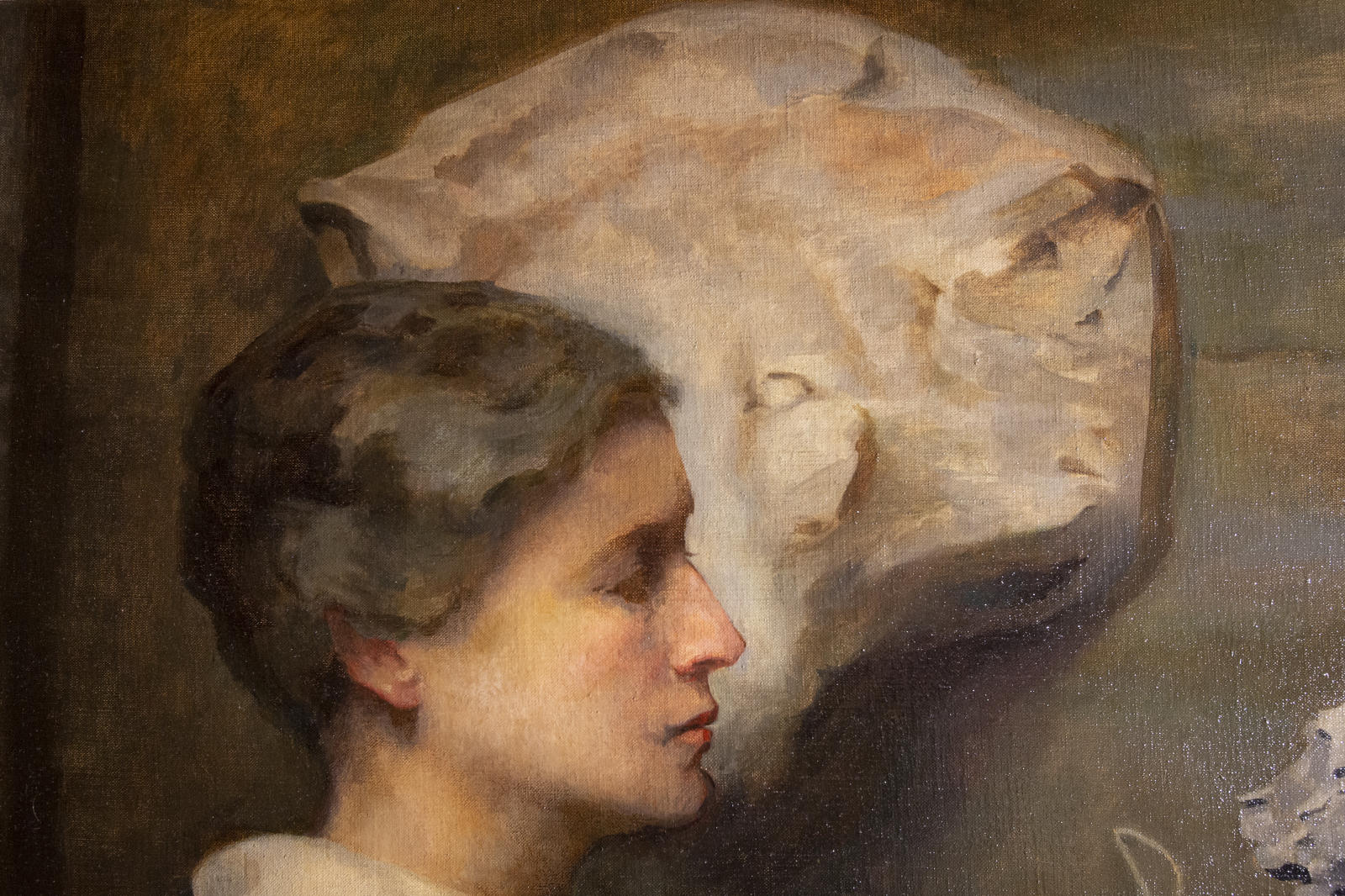
The gray wave in her hair is the same gray that her skirt fades to at the bottom of the painting, both of which match the clay that Anna is sculpting. She has taken on the qualities of the clay and the stone, perhaps symbolic of two sides of her personality. Adaptable, curious, and ever changing like the clay taking on the influences of the world and her lifetime of studies. Strong, confident, and steady like the stone.
The Lion and Joan of Arc
Even the subjects, too, the Lion and Joan of Arc, are, themselves, representative of her personality. Like Joan, Anna was a revolutionary – she pushed the boundaries of womens’ perceived capabilities. In France, she was stripped of a medal of honor and only given an honorable mention for her Joan of Arc because it was believed that no woman could possibly sculpt a life-sized version of the sculpture without the help of a man. Anna had a tendency to brush off a lot of things and this was certainly not one of them. She recalled her resentment of this accusation in a 1964 interview, 54 years later.
AH: But, curiously enough, they said that what I’d been doing, because I worked entirely by myself and did all
the building up of the life-size horse and everything, they said it was impossible for a woman to do it. Therefore, they couldn’t give me a real medal because they could not believe I had done it all myself.DS: Well, it’s too bad you didn’t have a moving picture camera there to report you.
AH: If I had had something like this apparatus or something . . .
In New York, her Joan was the first sculpture of a historical female AND the first public sculpture by a woman. Even the manner in which she sculpted her Joan of Arc, shown in 15th century armor with her sword raised to the heavens, had never been done before. Anna’s equestrian sculptures have a lifelike realism that could only be achieved through many years of careful study and observation and is one reason her equestrian monuments are so famous and beloved. While Anna was in New York, she spent a great deal of time at her brother’s farm in Maryland riding, training, and sculpting the horses. Even before this, though, Anna was able to study many animals, including exotic ones at Balchalx Circus. She would take her clay and tools studying and creating models of the animals on the spot.
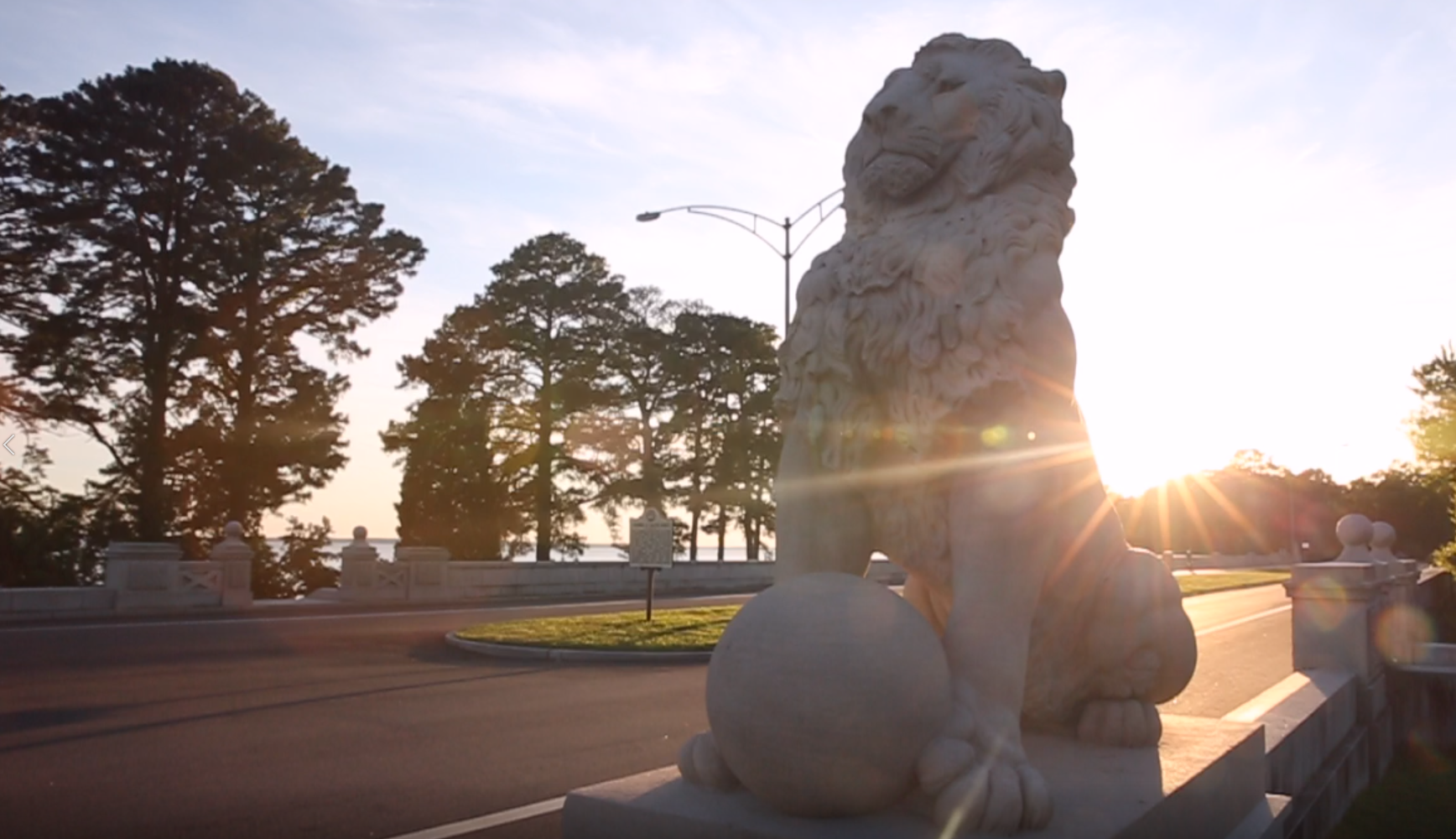
Much like the lion – another animal sculpture that she’s well known for – Anna was fierce, strong, and independent, and in the early 1900’s when women, especially upper class women were expected to be quiet and demure, Anna stood out from the pack. She took on the world, worked hard, defied odds, and boy did she impress.
The Fun of It
So it’s no wonder this portrait shows her in such a confident light. Marion Boyd Allen’s portrait is respectful and admiring of Anna’s graceful strength and perfectly captures her multifaceted personality. Allen was a skilled artist, though her career in art didn’t begin until 1902 when she was 40 years old. She was trained at the Museum School of Arts at Tufts University and known for her landscapes and vertical portraits, primarily of women – the portrait of Anna is her most famous work. She portrays their beauty, not through the gaze of a man or a lover, but through the lens of a friend and admirer looking at someone and capturing their essence, their inner beauty. Possibly seeing things that the sitter may have never seen in herself.
And that’s the fun of it. It’s fun to break the mold and be positive, to build each other up instead of tearing down. It’s fun to see someone’s face when you’ve shown them how incredible they are inside and out. And that’s what, I think, Marion Boyd Allen showed Anna – how incredible she was. From my research Anna and Marion weren’t friends per se, but the original portrait was not a staged or commissioned one. This is, perhaps, simply the work of one artist inspired by another.
And I find that really incredible. So here I stand, humbled as a woman respecting the work of a woman who is admiring the strength and skill of a woman who is celebrating her heroine. So just for fun, let’s keep it going. Let’s break the mold and actively try to build one another up, just for the fun of it.
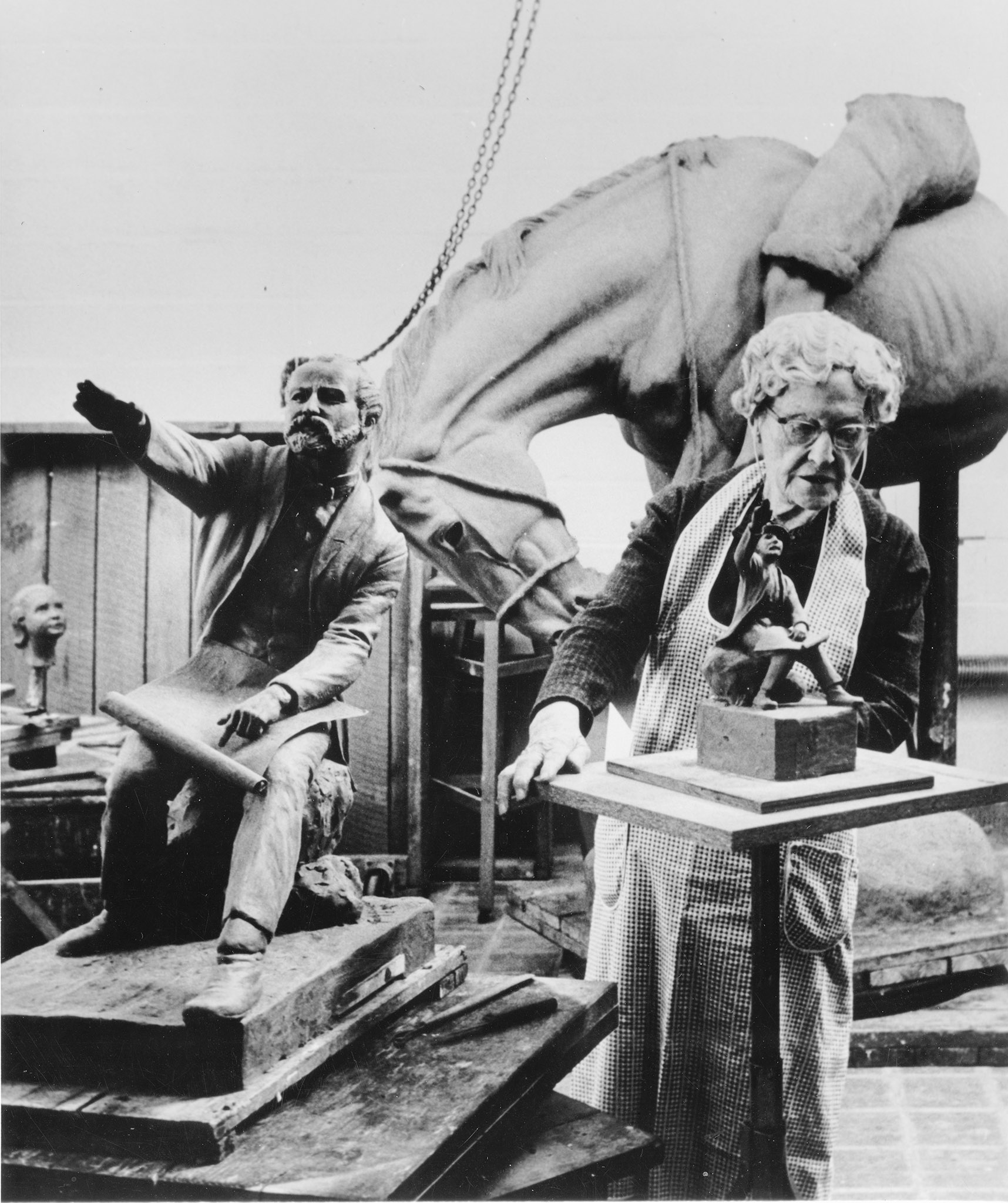
Be sure to watch the full episode here and stay tuned for new episodes the first Friday of each month!